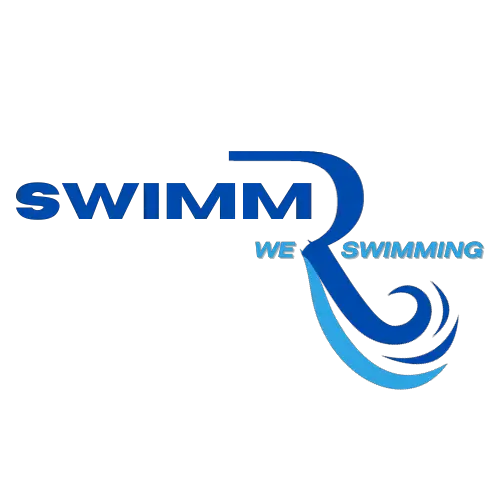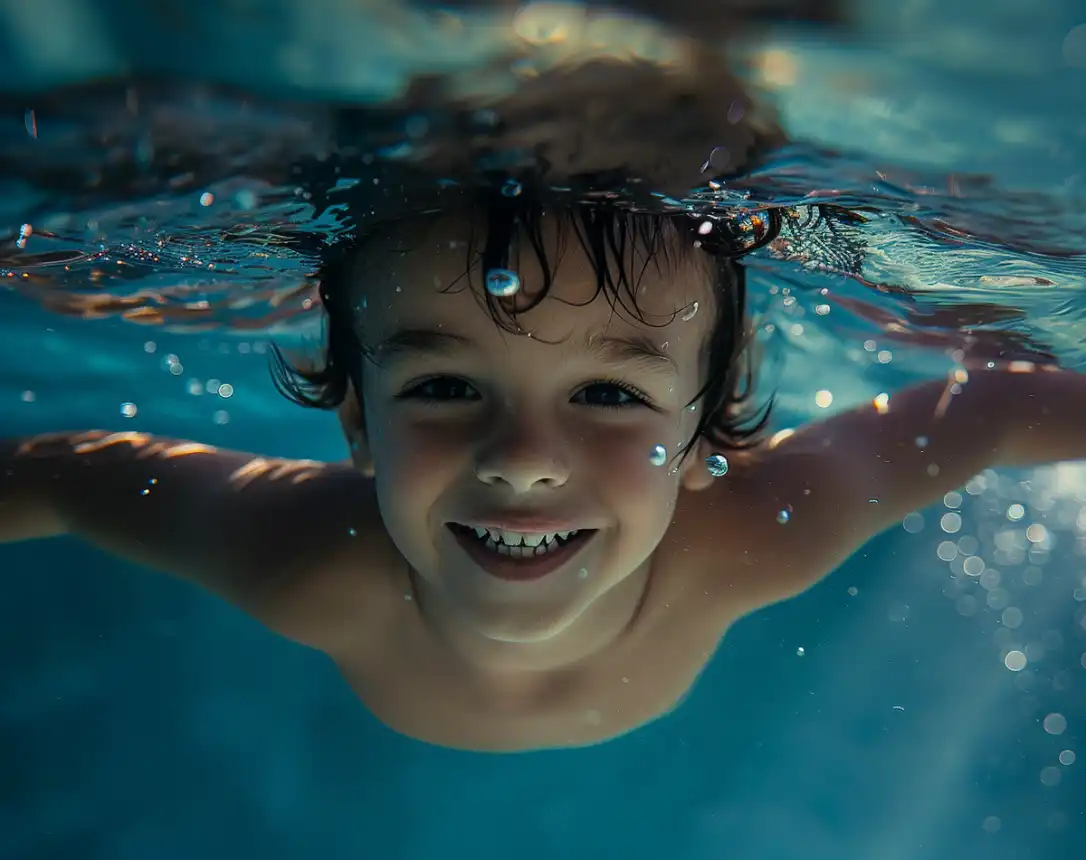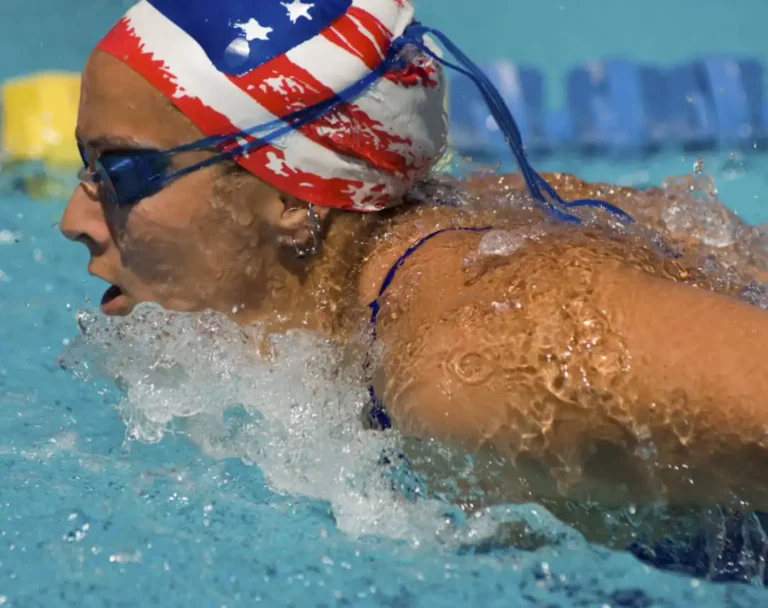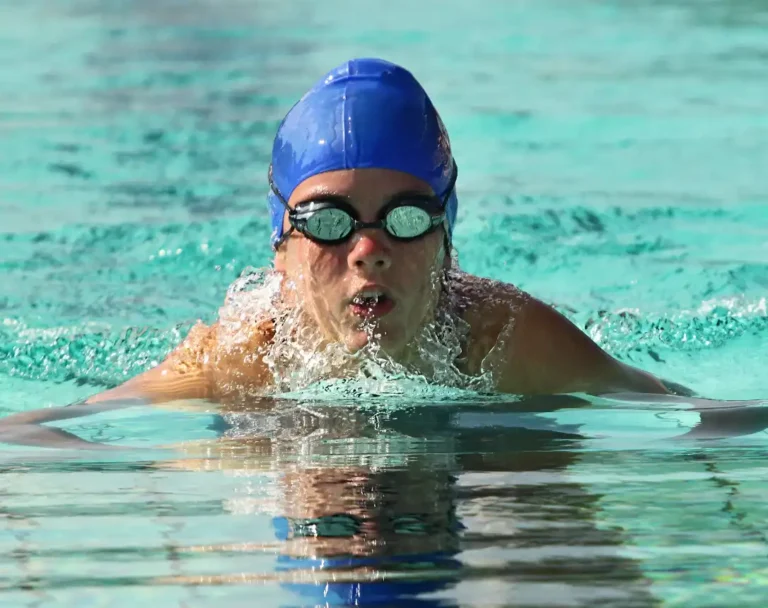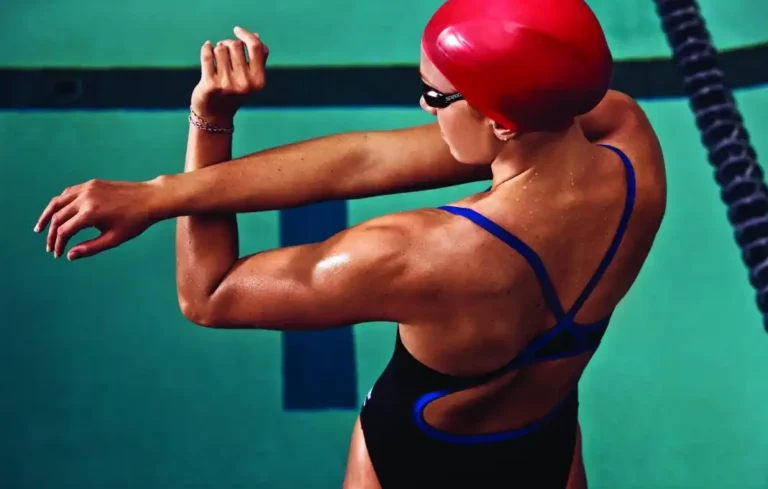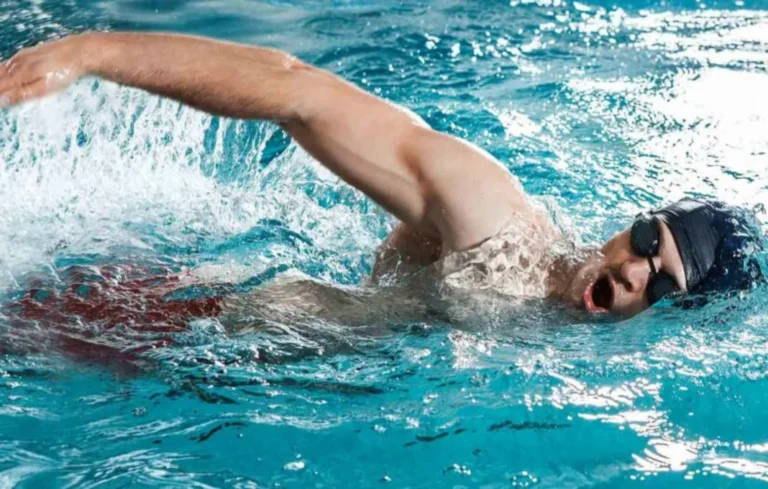Diving into the world of swimming can feel like navigating uncharted waters, but once you learning how to swim, it’s like unlocking a new realm of freedom. Imagine gliding through water effortlessly, each stroke taking you further into this serene world.
Whether you’re eyeing the vast ocean or your local pool, mastering swimming is not just about fitness; it’s about discovering a tranquil escape from the hustle of daily life. Let’s embark on this journey together, transforming apprehension into confidence, stroke by stroke. Ready to make waves?
Getting Started with Swimming
Jumping into the world of swimming is an exhilarating adventure. I’m thrilled to guide you through the essentials, setting you on a course to confidently glide through the water. Let’s unveil how to kick-start your swimming journey with gusto!
Understanding the Basics of Swimming
Swimming opens a new dimension of fitness and enjoyment in my life. Mastering this skill hinges on proper technique and understanding water safety principles. Remember, regardless of age, it’s never too late to start swim lessons at your local pool. Start with the fundamental strokes: freestyle, breaststroke, backstroke, and butterfly. It’s crucial to become comfortable with floating and treading water, as these are the cornerstones of staying safe in the water.
Choosing the Right Swim Gear
The swim gear I choose significantly impacts my comfort and performance in the water. For adults and children alike, a well-fitting pair of goggles is essential to protect the eyes from chlorine and ensure clear vision underwater. Furthermore, a snug swim cap helps in reducing drag and keeping my hair out of my face. Don’t skimp here; investing in high-quality swim gear enhances the entire experience.
Essential Swimming Skills
I’m thrilled to walk you through the foundational swimming skills that will transform you into a proficient swimmer. Grasping these essentials is key to moving confidently through water. Let’s dive into the world of strokes, kicks, and pulls!
Breathing Techniques
Learning how to breathe effectively is critical in swimming. The secret lies in the rhythmical pattern of inhaling through the mouth and exhaling into the water. Begin with the freestyle stroke:
- Inhale: Turn your head to the side during the arm pull.
- Exhale: Blow bubbles underwater as you glide.
Mastering this skill ensures you can swim longer without fatigue.
Mastering the Core Strokes
Each stroke – freestyle, breaststroke, butterfly, and backstroke – has its unique characteristics.
- Freestyle is all about alternate arm movements and a flutter kick.
- Breaststroke involves a frog kick and simultaneous arm movements.
- Butterfly features a dolphin kick paired with synchronous arm movement.
Understanding these strokes’ basics will help you adapt to different swimming scenarios.
Improving Your Kick
The kick drives your momentum, and each stroke has a specific kicking technique:
- Flutter Kick: Used in freestyle and backstroke. Keep your legs straight and alternate swiftly.
- Frog Kick: For breaststroke, bend your knees and whip your feet outward.
Efficient kicking is the foundation that supports your overall swimming prowess.
Developing a Strong Arm Pull
The arm pull propels you forward. For a powerful stroke:
- Freestyle: Pull the water down and back in a windmill motion.
- Breaststroke: Execute a heart-shaped pull beneath the surface.
Developing a strong pull enhances the efficiency of each stroke, conserving energy for longer distances.
Safety First
I know how thrilling it is to feel the embrace of water, but I can’t stress enough the importance of putting safety first. Whether I’m diving into the deep end or splashing in the shallows, knowing safety measures makes the experience not only enjoyable but secure. Now, let’s dive into the essentials of water safety and the critical role of lifeguards.
Learning Water Safety
First, I make sure to learn the basics of water safety which can be the difference between life and joy and a frightening situation.
- Swimming Skills: I ensure that I’ve got the basics down. The American Red Cross offers courses where I can learn proper techniques and build my confidence.
- CPR Training: It’s not just about swimming; it’s about being prepared. I took a CPR course to ensure I’m ready to respond in emergencies. The ability to save a life is empowering.
Understanding Lifeguard Support
Recognizing the support lifeguards provide is crucial for a safe environment.
- Constant Vigilance: Lifeguards are my allies. They’re trained to watch over and respond to trouble, so I always swim where a lifeguard is present.
- Asking for Help: If I’m unsure about the water conditions or have any concerns, I’m not shy. Speaking to a lifeguard gives me peace of mind.
Swim Lessons for Different Ages
Mastering the art of buoyancy is a thrill I wish everyone could experience, and with tailored swim lessons, that thrill is within reach for all ages. Young or mature, learning how to swim opens a world of adventure. Let’s dive into how swim programs are adapted for different life stages.
Swimming for Children
Children’s swim lessons are vibrant and fun, designed to introduce water safety and basic strokes through engaging activities. Red Cross swim lessons offer progressive stages, starting from as young as six months. Essential skills taught include:
- Floating: Vital for safety, taught through games.
- Kicking: Transforming little feet into powerful motors.
- Basic Strokes: Gradually introduced as kids grow in confidence and ability.
Age-appropriate teaching methods ensure kids stay captivated and learn swiftly.
Swim Training for Adults
Adult swim training often begins with overcoming apprehension and building water confidence. Here, instructors focus on:
- Breath Control: Essential for effective swimming and comfort in water.
- Stroke Technique: Detailed instruction to enhance efficiency.
- Endurance: Increasing stamina for longer swimming sessions.
Whether you’re learning to swim for pleasure or fitness, adult swim lessons are structured to meet your pace and ability, ensuring a fulfilling learning journey.
Advanced Swimming Techniques
Mastering advanced swimming techniques takes your skills from good to great, elevating my game in the water and giving me that edge when it’s most needed. These strategies often involve nuanced improvements that require practice and dedication, but the payoff in speed and efficiency is undeniable.
Perfecting Your Stroke Technique
In perfecting my stroke technique, every minute detail counts. I focus on maintaining proper body alignment to reduce drag; which means keeping my head down, spine straight, and hips up. This ensures a streamlined position. My stroke efficiency has dramatically improved by refining my arm movements, entering the water with my fingers first and then extending my arm fully before grabbing the water and pulling through.
- Hand Entry: Fingers first, then wrist, followed by the elbow.
- Catch: I make sure my hand is facing backward to maximally grab the water.
- Pull: My forearm stays vertical, resembling big paddles, pulling water efficiently.
Refining my stroke technique is not just about the arms; I also concentrate on a powerful leg kick, ensuring my knees are neither too rigid nor too soft. The flutter kick originates from the hips, with a slight bend in the knee, using the entire leg as a paddle.
Enhancing Your Swimming Speed
To enhance my swimming speed, I combine strength training with pool exercises. Building core strength is vital since it acts as the powerhouse for my swimming. My routine involves exercises that target the upper body, core muscles, and improve overall balance.
Strength Focus:
- Core: Planks and medicine ball throws to build a stable and powerful core.
- Upper body: Pull-ups, bench presses, and rowing for arm and shoulder strength.
- Knee & Ankles: Squats and calf raises to create a strong foundation for my kicks.
In the pool, I work on interval training to improve my pace. I set challenging yet achievable intervals and consistently aim to meet or beat them. Through these practices, I’ve found that my ability to maintain a fast pace over longer distances has significantly improved.
I always remember that to truly increase speed, I must combine enhanced strength with improved stroke technique. Efficient movements mean less energy wasted and more power for propelling myself forward. This includes not just propulsive force but also learning to tread water effectively, which is a valuable skill for maintaining position and pace without fatigue. It’s all about finding that sweet spot where precision, power, and endurance converge.
Swimming as Exercise
When I first plunged into the pool, I didn’t realize I was diving into one of the best workouts for my heart and lungs. Swimming isn’t just a life skill; it’s a full-on fitness regimen that enhances cardiovascular health and tones major muscle groups. It had me hooked with its unique combination of challenge and fun, providing me with an exhilarating workout that I could track and improve upon with every splash.
Planning Your Swim Workouts
To kick things off right, I design my swim workouts with variety and progression in mind. I ensure that my sessions include:
- Warm-up: 5-10 minutes of easy swimming to prepare my body.
- Main set: A mix of freestyle, breaststroke, and perhaps the vigorous butterfly to challenge every muscle.
- Drills: I spice up my routine with the flutter kick to build leg strength.
- Cool-down: Another 5-10 minutes of easy laps to lower my heart rate gradually.
I aim for at least 20-30 minutes in the water, three times a week, to maintain my fitness and see tangible progress in my capabilities.
Tracking Fitness Progress
As for keeping tabs on my fitness journey, I’m methodical:
- Distance: I log the total yards or meters swum each session.
- Frequency: Recording how often I hit the pool helps me stay consistent.
- Time: Noting down how long it takes me to swim a set distance.
- Heart Rate: Monitoring my heart rate post-workout indicates how my cardiovascular health is responding to the sport.
By checking my progress against these metrics, I enjoy seeing firsthand how swimming fortifies my lungs, elevates my heart health, and advances my fitness levels. It’s not just a sport to me – it’s a thriving celebration of health and vitality, stroke by stroke.
Overcoming Challenges
I remember when I first dipped my toes into the pool, my heart racing with nerves–but let me tell you, settling those first-time jitters was worth it. Let’s dive into two major hurdles you might face and how you can glide past them.
Dealing with Water Phobia
If the mere thought of getting into water sends a shiver down your spine, know that you’re not alone. Water phobia can be daunting, but it’s manageable. First, familiarize yourself with water through gradual exposure. Start with just your feet, then progressively submerge more of your body as your confidence builds. Remember, it’s about small victories! Practice holding your breath and blowing bubbles to get used to having your face in the water, which is often the first uncomfortable step.
Conquering the Deep End
The deep end might seem like a vast abyss, but it’s just another part of the pool. Start by learning to tread water near the edge where you can easily grab hold if you feel uneasy. As you gain strength and stamina, venture a bit further. The trick is to stay calm and breathe regularly – hyperventilating will only sap your strength and make you feel more uncomfortable. Once you’ve mastered treading water, practice swimming towards the deep end with a floatation device. This will give you the reassurance that you’re safe from drowning and the buoyancy needed to build your confidence.
Integrating Swim Practices
Elevating my swimming skills required more than just thinking about it; I had to plunge into the world of swim practices with zeal. It’s like unlocking a new level in a game where the rewards are improved health, technique, and the sheer joy of gliding through water like a pro.
Utilizing Community Resources
Community Pools: Many local pools offer access to public swim times and learn-to-swim programs. Leverage these to create a consistent practice schedule. For instance:
- Monday/Wednesday/Friday: Freestyle focus, using kickboards and pull buoys.
- Saturday: Backstroke and starts/turns clinic.
USA Swimming: This organization provides resources for all ages and skill levels. By joining a local USA Swimming club, I gain structured workouts and the chance to compete, pushing my limits further.
Setting Goals and Staying Motivated
Goal Setting:
- Short-Term Goal: Mastering a new stroke within three months.
- Long-Term Goal: Participating in a U.S. Masters Swimming meet by the year’s end.
To stay motivated, I track my progress and celebrate small victories, which could be as simple as refining my kick technique or improving my lap time. My drive to swim better intertwines with personal ambition and the vibrant community of swimmers I meet along the way.
Diversity and Inclusion in Swimming
I want to share my passion for a topic that’s close to my heart: diversity and inclusion in the water. Getting everyone into the pool, regardless of background or zip code, is more than a campaign; it’s about changing lives.
Promoting Access to Swim Lessons
I believe every person deserves the right to learn to swim, a vital life skill that offers joy, health benefits, and safety. Yet access can be unequal. African American children, for instance, are far less likely to have access to swim lessons. This gap is often due to a lack of resources in certain communities or limited availability of local swimming facilities. Cullen Jones, an Olympic gold medalist, has made waves by spotlighting the need for more inclusive swimming programs. Programs like the Red Cross training aim to bridge these disparities, providing lessons in underserved areas. Here’s a clear picture of what’s happening:
- Increased Outreach: Bringing swim programs directly to communities with limited access.
- Partnerships: Teaming up with local organizations to offer affordable lessons.
- Scholarships: Providing funding to those in communities where cost is a barrier.
The Importance of Representation
Seeing someone who looks like you achieving great things can be incredibly inspiring. For me, witnessing Cullen Jones’s success was a game-changer, showing me that swimming isn’t just for a select few. Providing diverse role models in the sport is critical in encouraging all children, especially those from underrepresented groups, to dive into swimming. When a child sees someone like them swimming, it tells them, “Yes, I can do that too!”
The Next Steps in Swimming
I’ve mastered the basics of swimming, from confidently treading water to gliding with ease for 25 yards. But, what’s next for me? Elevating my skills to the next level involves two key areas: competing and enhancing my proficiency. Both require dedication, practice, and the guidance of a seasoned swim coach. Let’s dive into these next steps!
Participating in Swim Competitions
The first plunge into swim competitions is a thrilling leap forward. Before my first race, I need to focus on building endurance and learning the rules of competitive swimming. Training should include:
- Sprints: To boost speed for various strokes
- Endurance Swims: Aim to swim longer distances without stops
- Practice Drills: Work with a coach to refine turns and streamline exits
With these tools, I’ll be race-ready – poised on the starting block, heart racing, eyes fixed on the pool’s gleaming surface.
Becoming a Confident Swimmer
Beyond competitions, being truly confident in the water involves a delicate balance of skill and composure. Here’s how I’m striving to achieve that:
- Balance Drills: Practice different floating techniques to enhance my balance.
- Exit Strategies: Learn the most efficient ways to turn around and exit the pool.
- Mentor Guidance: Regular feedback from my swim coach ensures I maintain correct form and technique.
As I grow into an accomplished swimmer, transforming initial flutters of nervousness into excitement for the water, I can feel my passion for swimming deepening with every stroke.
FAQ – Frequently Asked Questions
Is it too late for adults to learn how to swim?
Absolutely not! Adults can learn swimming at any age with patience and practice.
What are the basic swimming strokes to learn first?
Focus on freestyle and breaststroke as they lay a solid foundation for swimming techniques.
How long does it take to learn how to swim?
It varies, but with consistent practice, beginners can see progress in a few weeks to a few months.
Thank you for diving into our guide on how to learn how to swim! We’d love to hear your stories and tips – drop a comment below or share with us on Instagram or Pinterest.
